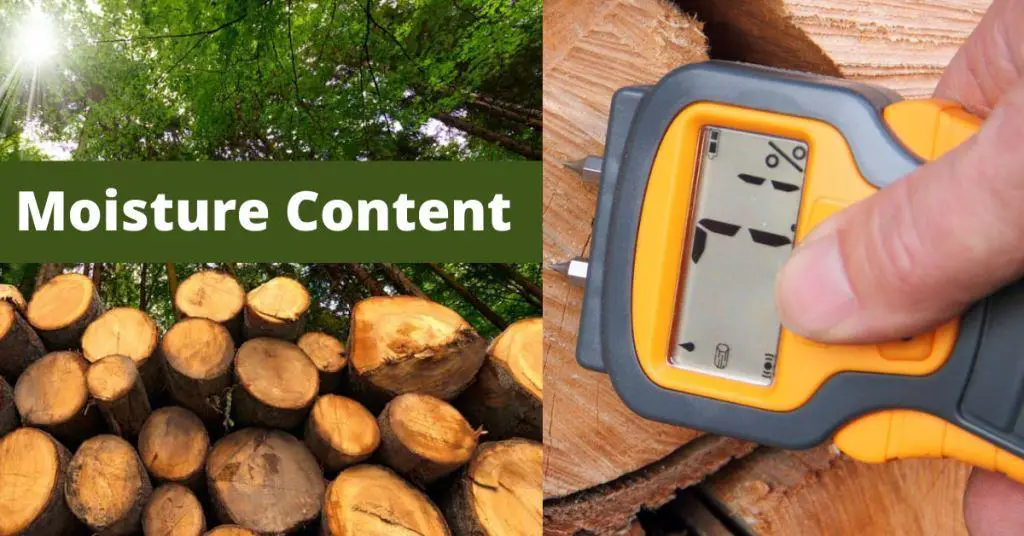Wood absorbs moisture. If you are a woodworker, you should know how wood responds to moisture in the air. It is a constant concern for anybody who works with wood, including cabinet makers, hardwood floor installers, etc. Furthermore, wood gets or releases moisture according to the relative humidity (RH) of the surrounding air. Also, it expands or contracts as a result of the changing humidity. What moisture Content for Woodworking? Let’s check together-
What moisture Content for Woodworking:
The expansion of the wood is caused by the humidity of the air. The MC lowers when the humidity drops. It directs the wood to expand. According to the theory of professor Dr. Eugene Wengert, you should take dry wood within 2% of the EMC in woodworking.
Are you still confused? Go through the graph below. It will make everything obvious.
| The humidity of the in-use site
|
EMC level
|
Corresponding MC the wood will attain at this location |
| 47-52%
|
9% | 9% |
| 40-46%
|
8% | 8% |
| 33-39% | 7%
|
7%
|
| 26-32%
|
6%
|
6%
|
| 19-25% | 5%
|
5%
|
Using this table, we can determine the EMC of the in-use site and the wood moisture content. We can tell wood destined for internal use in this area should be preserved at this moisture content before and during the manufacturing phase. Additionally, dry it to a level of about 6%.
Acceptable Moisture Content Of Kiln Dried Wood:
Typically, kiln-dried wood contains 10% to 25% moisture. Usually, you will get 20% moisture from kiln-dried wood. It helps to prevent shrinkage of the wood. The kiln drying process also protects your wood from separation.
However, post and beam constructions require air drying rather than kiln drying. To prevent shrinking and subsequent breakage, posts, and beam be dry. For indoor use, select 20 percent moisture and 30 percent or less for outdoor.
How To Calculate Moisture Content Of Wood?
You can estimate the typical moisture content of wood with the dry weight method. A moisture meter is an alternative option too. In this method, you just need resistance with shielded sensors and hammer electrodes.
Moreover, wood typically contains 8% and 25% moisture content its weight. The ambient temperature and relative moisture will be reflected in the EMC of the wood.
How do I interpret the results from my wood moisture meter?
A wood moisture meter is an essential tool for construction and carpentry work that allows you to measure the amount of water in different types of wood. Knowing the moisture content in your materials can help you determine if they are safe to use, as well can alert you to potential problems. But once you’ve taken a reading, how do you interpret it? Here’s what you need to know.
1. Checking Moisture Levels Against Recommended Standards:
Each type of wood has its own ideal range of moisture levels; this will depend on where it is being used and what requirements must be met. For example, when constructing outdoor furniture, the wood should generally have a moisture content of between 10 and 12 percent. If you’re using it for interior construction, such as in windows and door frames, 6 to 8 percent is ideal.
2. Understanding Moisture Content Readings:
Wood moisture meters measure the amount of water present in your material; this is expressed as a percentage relative to its weight. The reading indicates how much of the wood’s total weight is due to water, rather than the materials that make up the wood itself.
3. Identifying High or Low Moisture Levels:
When interpreting your results, first compare them against the recommended standards for your project. If they fall outside of this range, then you need to take action. If the moisture levels are too high, you may need to dry out the wood further before you can use it. On the other hand, if they’re too low, then you may need to treat your material with a preservative or sealant in order to protect it from damage.
4. Taking Precautions When Working With Moist Wood:
It’s important to be aware of the dangers posed by working with wet wood. Not only can it warp and crack over time, but it’s also highly flammable and can easily catch fire if exposed to an open flame or spark. Therefore, be sure to use appropriate safety equipment and take all necessary precautions when working with moist wood.
By using a wood moisture meter and interpreting the results correctly, you can ensure that your materials are safe and suitable for use in any project. Knowing what to look for and how to take action when needed is the best way to guarantee success in your construction or carpentry work.
FAQs:
Q2: How is moisture content measured?
Answer: There are several different ways to measure moisture content. Common methods include gravimetric analysis (weighing), volumetric analysis (measuring volume changes), Karl Fischer titration (using chemicals to determine how much water is present), and infrared spectroscopy (using light to measure moisture).
Q3: Why is it important to measure moisture content?
Answer: Knowing the moisture content of a material can help manufacturers and other users better understand how the material will behave in different conditions. It also can help ensure that products are being made with the right amount of water, which affects quality control, shelf life, and safety. Additionally, measuring moisture content can help prevent potential problems such as mold growth or corrosion due to excess humidity.
Q4: What are some common applications for measuring moisture content?
Answer: Moisture content is measured in many industries including food production, pharmaceuticals, electronics manufacturing, construction materials, and paper manufacturing. It can also be used to measure organic content in soils and other materials, as well as humidity levels in indoor environments.
Q5: Is there any potential danger associated with measuring moisture content?
Answer: While it is generally safe to measure moisture content, some of the methods used for testing can involve hazardous chemicals or require specialized equipment that should only be operated by trained professionals. Therefore, if you are unsure about how to safely test for moisture content, it is best to consult a qualified professional or laboratory for assistance.
Q6: What precautions should be taken to protect materials from moisture damage?
Answer: In order to prevent moisture from damaging materials, it is important to properly store and transport them. For example, when transporting products like electronics or construction materials, it is important to use waterproof packaging and keep them away from extreme temperatures or humid environments. Additionally, proper ventilation can help reduce the accumulation of moisture inside buildings and minimize the risk of mold growth or other problems due to excess humidity. Finally, regularly inspecting and monitoring moisture content can help you detect any potential issues before they become serious problems.
Final Verdict:
After considering the advantages and disadvantages of using wood moisture content, it is clear that its use is beneficial for ensuring quality construction. It provides a reliable way to identify potential problems with moisture build-up and can help in preventing costly repairs down the line. The accuracy of readings taken from an electronic moisture meter provides assurance that the timber has been properly treated and dried before being used in construction projects. With proper use, wood moisture content can be an invaluable tool for any contractor or homeowner when considering which types of lumber are best suited for their needs. Therefore, we recommend its use as part of any building project to ensure long-term success.
Related Post:
How to Properly Dry Wood for Painting?
What Moisture Content for Firewood?
Where to Buy Woodworking Tools?


















